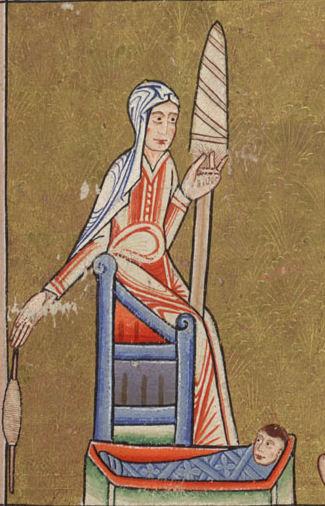European History, c.900 - c.1450

This paper covers one of the most exciting periods of European history. The historical processes that took place during these centuries have been described as ‘the making of Europe,’ a Europe that encompassed ‘central’, ‘northern’ and ‘eastern’ as well as western lands.
Many aspects of our society that we take for granted today have their origin in this period: the political units that gave rise to the modern states, lawyers, banking, marriage by mutual consent. At the same time, the central and later Middle Ages were in many respects very different from our own epoch. Christianity was a defining characteristic of life; personal bonds rather than faceless bureaucracies dominated, and no sharp separation existed between public and private. The period is characterized both by the great territorial expansion of Christendom and the rise of new political, religious and economic systems. New regions joined Christendom: Scandinavia and Central Europe converted to Catholic Christianity, the Balkans and Rus’ to Greek Orthodoxy. European expansion also proceeded through warfare, notably in Iberia and the Baltic, and crusaders even began the conquest of areas outside Europe. Later in the period, however, new threats emerged that even raised the spectre of the fall of Christian Europe, first the Mongols, then the Ottomans. Within Europe, new governmental systems developed with the rise of new monarchies, concentrating authority in the face of challenges from popes, parliaments, nobles and popular uprisings. The papacy emerged as the effective head of the Catholic Church, only to plunge into crisis in the late fourteenth century with exile in Avignon and the Great Schism eroding papal power.
It was a period of radical demographic change: a substantial population increase across the twelfth and thirteenth centuries, followed by catastrophic decline in the fourteenth, when famine and the Black Death wiped out a third or more of the population of western Europe, turning topsy turvy the social structure of town and country as land values fell, labour became expensive, and rebellions broke out in Italian, Flemish, and French towns. Europe experienced the emergence of a money economy and international trade. Trade networks provided Europeans with everyday as well as luxury products, from grain and wood to furs and exotic spices. Cities (particularly in northern Italy and the Low Countries) became independent and politically important actors. The ‘twelfth-century Renaissance’ led to a renewal of the intellectual life, and the thirteenth century saw the foundation of universities. A search for greater involvement in religious life led to the rise of lay religious movements, some accepted, others branded as heretical by ecclesiastics. Such dramatic social, political and economic changes also led to confrontation and persecution. An increasing hostility to non-Catholic Christians, including heretics; warfare against Muslims conceived as ‘holy war’; and the persecution of Jews (including pogroms and the invention of accusations such as the ritual murder of Christian children by Jews) also emerged during this period.
The paper offers both a wide geographical scope encompassing all of Europe; and a range of themes including (but not limited to) individual kingdoms, the church and religious institutions, the economy, marriage and the family, and the history of minorities. Students should attend all lectures to get a good overview of the whole period, but can focus on supervision topics of their own choice, in discussion with their supervisor: these supervisions can be more narrowly focussed both chronologically and geographically. The exam paper will accommodate either approach.
For further information please follow the link below.
This material is intended for current students but will be interesting to prospective students. It is indicative only.
